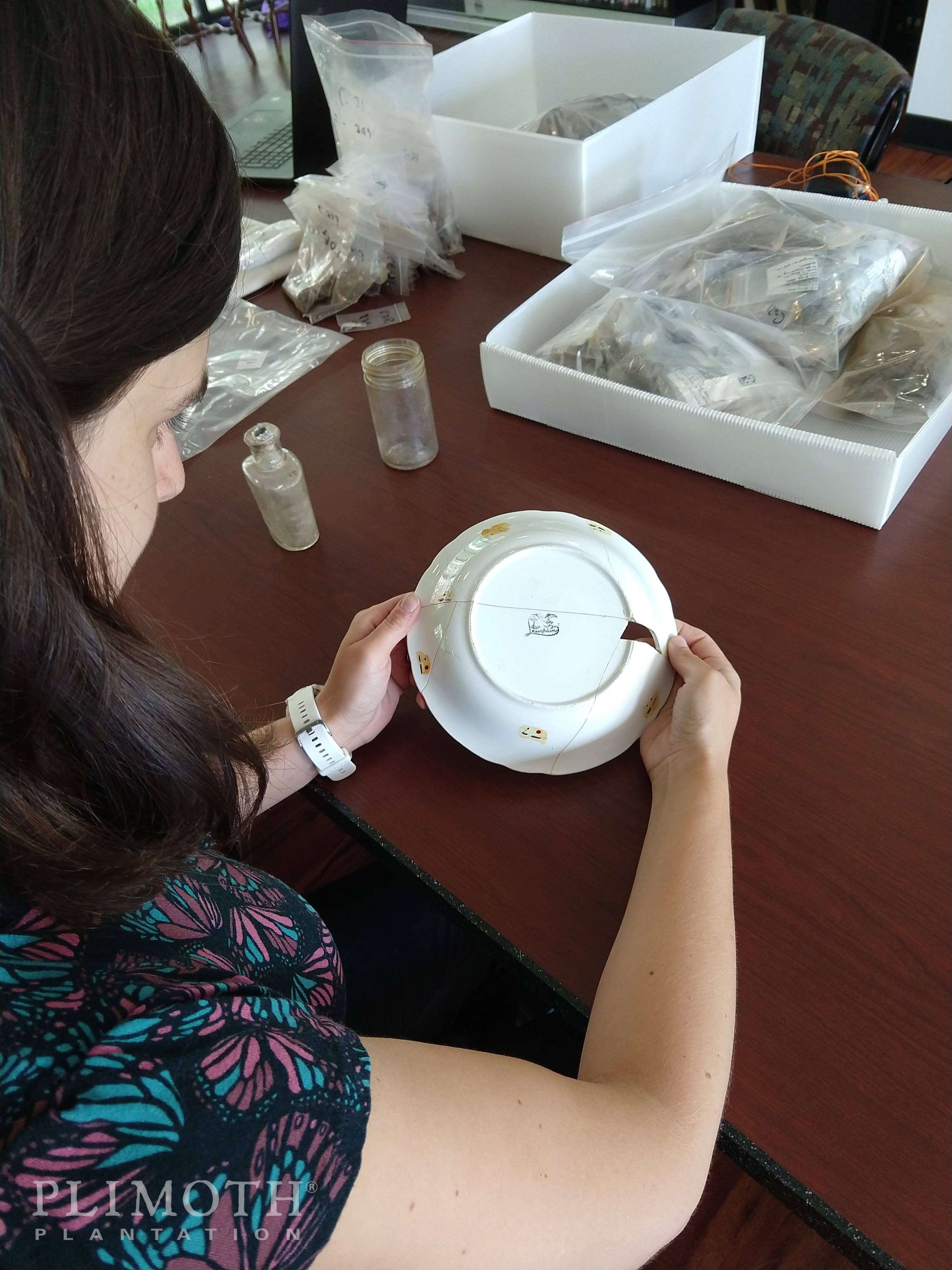
Grad student Elizabeth Tarulis working on later period artifacts from the 17th-century Allerton/Cushman site.
The Allerton/Cushman site is believed to be the home site of Isaac Allerton, merchant and official representative of Plymouth Colony. Located in Kingston, MA this was probably one of the first residences established by settlers immediately outside of Plymouth Colony. It was owned by several others over the years including Allerton’s son-in-law, Thomas Cushman.
The site was discovered in the 1970s when a couple purchased the land to build their home. As the topsoil was stripped, the architect for the construction project recognized that some artifacts were turning up which looked very old. He brought them to Dr. James Deetz, the Assistant Director of Plimoth Plantation at the time. Deetz realized that the construction crew had identified a significant 17th-century colonial site. He took a team out to excavate the site, and the majority of the artifacts they found are still at Plimoth Plantation. A small portion of the collection is also at the Kingston Public Library.
We are working to make Deetz’ work available to a wider audience by digitizing this collection. We have already completed the first step by scanning the site documents. We have very detailed site maps, but appear to be missing some field notes and inventories that are mentioned in a later report. Currently we are cataloging the artifacts and entering this information into a database. We began with the “19th and 20th-century materials” box, which has almost anything you can think of from dozens of cigarette butts to a plastic cowboy to two 20th-century rat nests.
As with any older collection, this one has a few quirks. All of these artifacts are labeled with color-coded dots and dashes to indicate their provenience, or the location within the site where they were found. While it is fabulous to have the provenience information, this paint system did not survive well on some of the artifacts. The colors have faded, which proves challenging when you need to distinguish between white and grey or yellow and gold. Further, the coating on top of the painted dots has yellowed, making it difficult to distinguish between green and blue or white and yellow.These artifacts are also sorted by material rather than provenience (where they were found). Sorting by provenience is the current best practice, and one of the most time-consuming tasks of the digitization process has been to organize the color-coded artifacts from large bags of glass or plastic into their respective proveniences. The end result of this process will be that artifacts that were found together will be once again stored together.
Despite these issues, this collection is in good shape for its age. We plan to fully catalog these artifacts, reorganize them by provenience, photograph the objects, and make this information accessible online to scholars and members of the public. Although we have not yet started working on the earlier materials, previous research suggests that this is a rich 17th-century site. It will be a valuable resource for future researchers, and we look forward to seeing what is yet to come.



August 31, 2018 at 1:17 PM
Excellent work, there! The Allerton/Cushman line is my line!
September 10, 2018 at 11:33 AM
Thank you so much for doing this! This will be a blessing to future scholars!